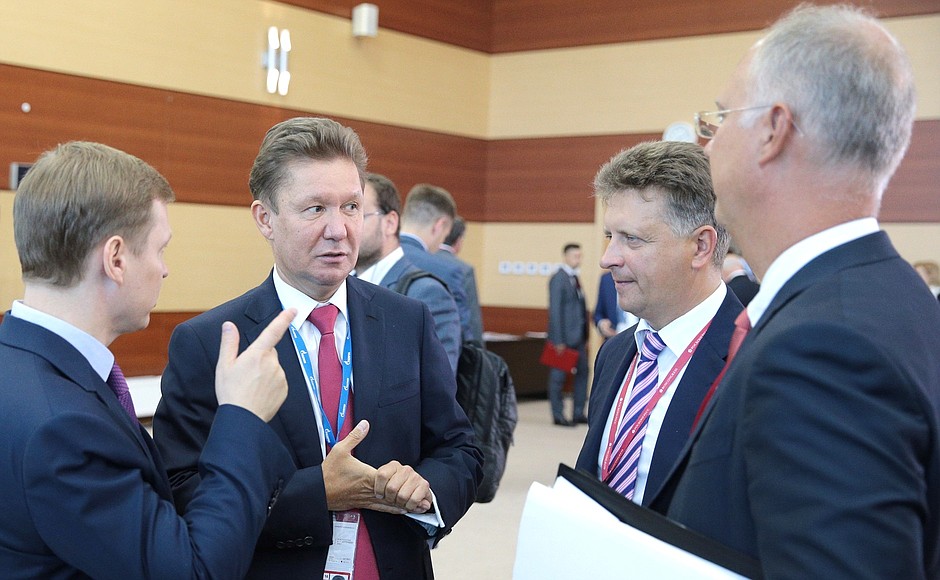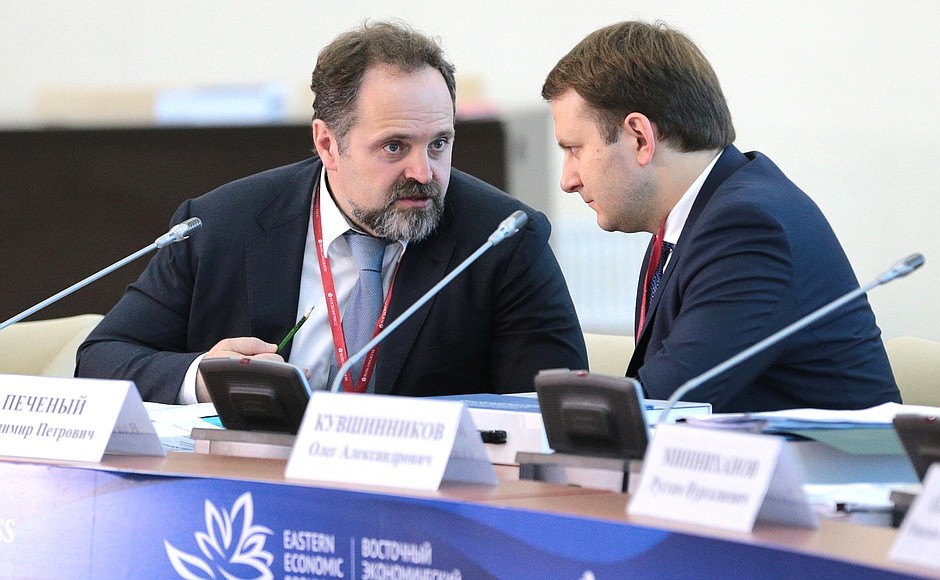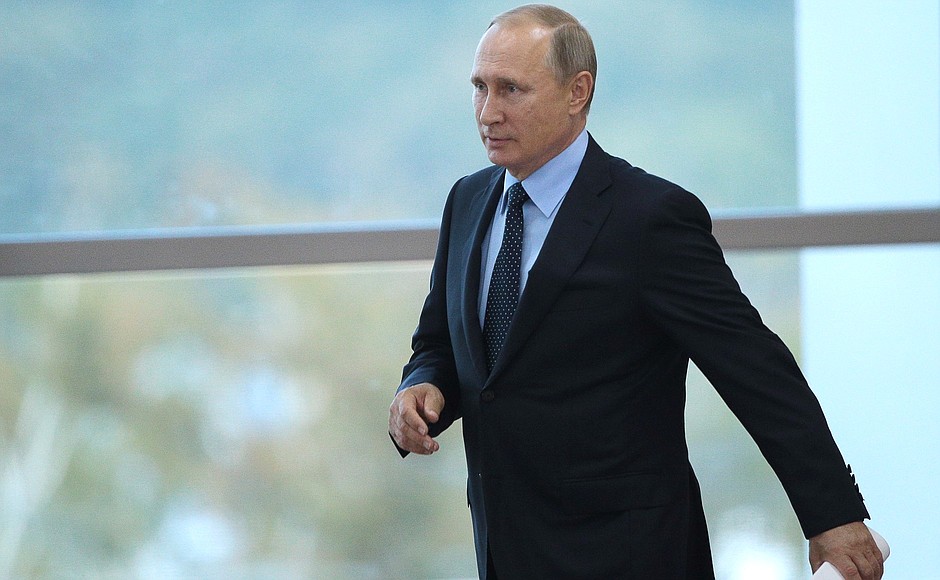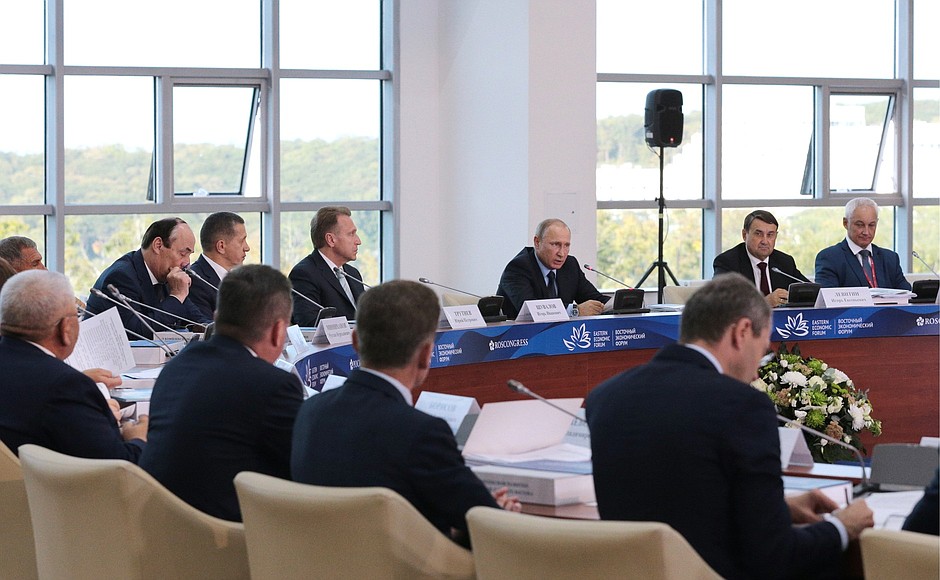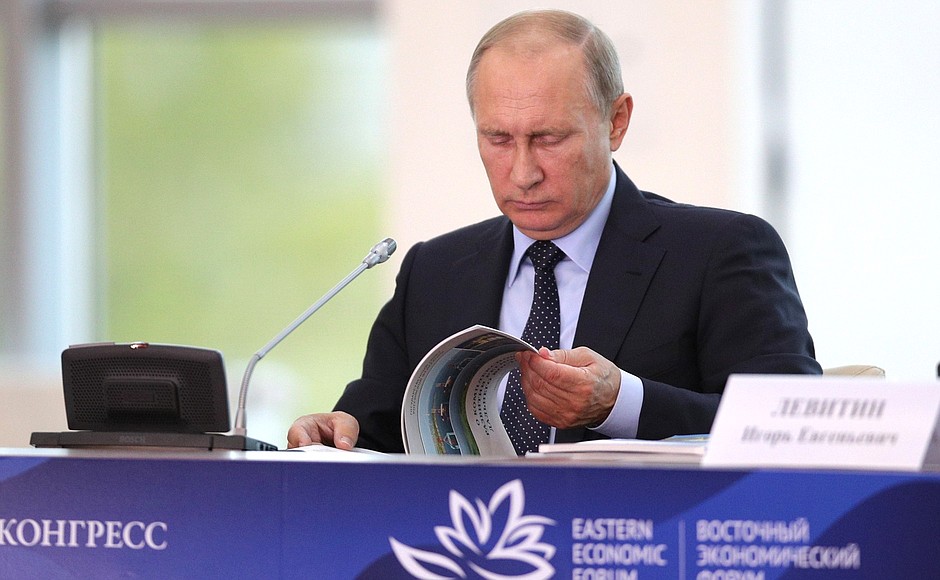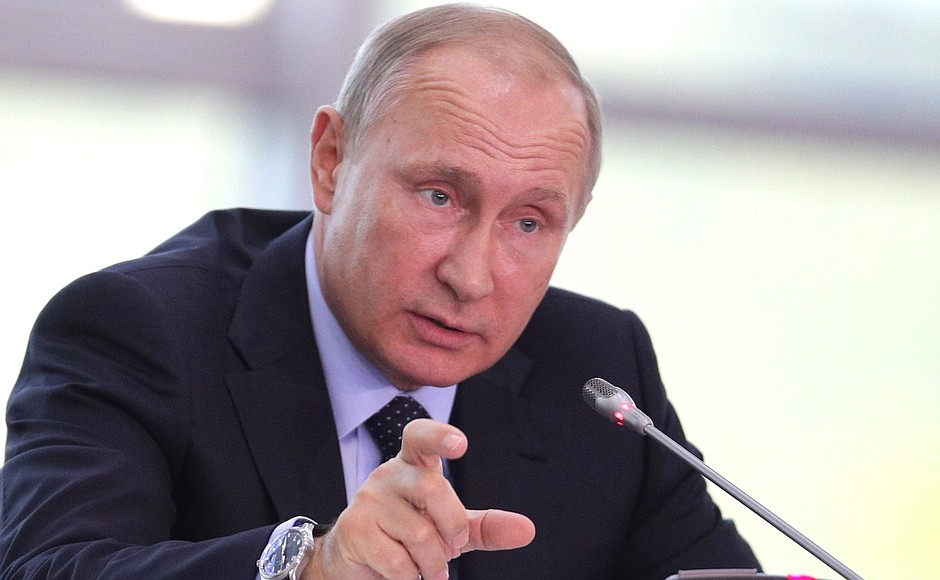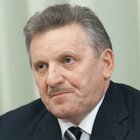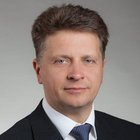President of Russia Vladimir Putin: Good afternoon, colleagues,
The State Council Presidium is holding today’s meeting within the framework of the Eastern Economic Forum. We will discuss the comprehensive development of the Russian Far East and creating conditions for attaining quality improvements that will be obvious to everyone in all Far Eastern regions by the middle of the next decade. We have adopted a decision on a large-scale progressive modernisation and development of the Far East.
It is clear that we could not make up for the decades of unresolved problems within a matter of the past few years. Frankly speaking, when I look at what is being done now I sometimes feel that we are not doing enough, because we want to see the results of more effective work sooner, we want all of us to work more effectively. But I understand that everything we are doing will take a long time to complete, that these projects cannot be implemented as simply and quickly as we would like to.
Of course, there are also positive changes, and quite a lot has been accomplished already. We have created special development institutions and the legal framework for the operation of priority development areas and the Free Port of Vladivostok. We have launched the One Hectare programme in the Far East and large infrastructure and industrial projects, which have produced the first results.
For example, industrial growth rates are higher in this macro-region than the country’s average. The past three years were far from simple for the Russian economy, yet the average growth rate [here] is 8.6 percent. This is much higher than elsewhere in the country.
We have already learned how to attract investments to the Far East, and this work will certainly continue. Now the main task is to raise the people’s standard of living. It should not only reach the nationwide average, but even exceed it in the future. It is vitally important to achieve positive changes that people living in the Far Eastern regions will really feel.
In the past 25 years, almost 2 million people have left the macroregion. Today, the migration situation is slightly better, but the population continues to decline yearly, not at the same pace as before, but it is still declining by some 0.3 percent. Our main task is to increase the attractiveness of the Far East. This means decent housing, quality healthcare, transport accessibility, modern schools, kindergartens and day nurseries. In short, it is necessary to create conditions so that more hardworking, talented and educated people will come here.
The solution of both economic and social tasks can be successful only with the comprehensive development of all nine Far Eastern regions. The Government is developing jointly with the regions draft projects through 2025 for each of these regions. This is a very important stage, when everything needs to be carefully thought through and calculated.
Meanwhile, problems are now arising both at the level of the federal budget and at the level of individual agencies. We know that due to various objective reasons we have not been able to fulfil everything that we were going to do to finance the Far Eastern projects – I mean the federal budget. Although the work is going quite well there on the whole.
I would like to draw the attention of the Government, the economic bloc, the Economic Development Ministry and the Finance Ministry, to the fact that the Far East continues to remain our priority. Let's remember that. I would ask you to promptly make the necessary adjustments and to ensure funding for integrated regional development programmes in the future.
Let me also remind you about the decision to include designated Far Eastern chapters within the key state programmes. I saw a report on the implementation of this decision. It provided a ranking of state programmes in terms of their contribution to the development of the Far East. I have to say that in a number of areas the situation is modest, to put it mildly, if not outright dismaying.
What is this all about? Who drafted these programmes? They were developed by ministries and agencies in charge of specific sectors. Instead of creating special sections on the Far East within the programmes, they either failed to mention it or lack substance. Listen, here is what I want to say to my colleagues in the Government: I will look very closely into this issue, mark my word, and I want everyone to understand that appropriate measures will be taken against those who fail to deliver. We will have to appoint people to those ministries and agencies who understand our country’s development priorities. Please keep this in mind and make sure you address this situation.
Moving on, we have here with us heads of companies that invest in the development of Russia’s Far East. I would like to hear from you, colleagues, whether the current federal and regional support mechanisms are effective and to what extent.
I think that we need to set a specific objective: in the next three years, all Far Eastern regions should be in the top half of the national ranking of regions in terms of their business climate. What this means is that the Far East should outperform other regions in terms of promoting positive change. Other regions will also seek to improve their standing. Of course, we must keep this in mind.
I would like to highlight a sensitive issue for many entrepreneurs in the Far East and across Russia. I am referring to excessive oversight and control. We discuss all the time the issue of inspections being held without any reason or justification.
In August, in Blagoveshchensk I instructed the Government, the Prosecutor General’s Office and law enforcement agencies to look into this situation one more time in order to put things straight in terms of oversight. I expect a separate report on these efforts.
The One Hectare programme has proved worthwhile for supporting local businesses and promoting territorial development. Those who have received land under this programme have not only launched their own businesses but have united into new populated areas in the Far East for the first times in decades. The federal and regional governments must provide them with financial assistance and help them create communal infrastructure. I also suggest that those who are successfully working and have privatised their plots of land be offered larger plots of land to develop.
We should also give our compatriots who settle in the Far East an opportunity to join this programme. In general, we must analyse the progress this programme is making. As you know, people asked me about this during the Direct Line programme and complained about problems and red tape. We must analyse all these questions and come to proper conclusions. Those who come to live here, including those who come from foreign countries, come with the intention to work here and to build strong families with many children. We must certainly support these people.
Colleagues, during our meeting in Kaliningrad, where we discussed transport problems in northwest Russia, we agreed to do the same for the Far East. As I have already said, the macro-region’s logistics infrastructure is a key area in the development of Russia’s transport system and international transport corridors.
Aviation is crucially important in the Far East. We launched a programme of subsidised flights here in 2010. Over the past eight years, the number of subsidised flights has nearly tripled. But this year problems with buying subsidised tickets were reported. Actually, I believe that this happened not only this year. If we look carefully, we will most likely see the same problem last year.
I want the Transport Ministry to report on what they plan to do about this problem. We must create conditions in which people living in any part of Russia would feel that they all live in one country. I am not going to formulate solutions right now. I am asking everyone to analyse the situation and submit their proposals.
There is also an obvious need for creating more internal routes, which is a separate and very important task. We must think about what we need to do to towards this end.
Another question concerns passenger services between the Far Eastern islands and the mainland. This directly concerns the Kamchatka Territory, where aviation is the only means of passenger service available, although there are vast opportunities for using sea routes.
Also, I want you to tell me about the implementation of the key infrastructure projects, including the Trans-Siberian and Baikal-Amur mainlines and the development of large sea ports and airports. Proper organisation of the checkpoints on the Russian border is of crucial significance. Let us talk about this issue; let us talk about what we are doing in this area.
Colleagues,
We have made big but so far only the first steps towards the priority development of the Far East. There is hard and responsible work ahead, but we will definitely accomplish it if we act together and implement all our plans without fail.
The working group of the State Council has presented a detailed report with many new proposals and has prepared a number of measures related to the comprehensive development of the Far East. Let us discuss it.
Mr Shport, you have the floor.
Governor of the Khabarovsk Territory Vyacheslav Shport: Mr President, colleagues.
First of all, I would like to thank you, Mr President, for your trust and the opportunity to prepare the working group’s report on the comprehensive development of the Far East.
In 2013, you described the development of the Far East as a national project of the 21st century. As per your instructions, we have quickly started creating a model of priority economic development of a macroregion that is completely new to Russia. This model is based on the creation of an investment climate and investment systems in the Far East that will be competitive in the whole of Asia Pacific. The new development mechanisms, which we created for a macroregion, are truly working.
The first resolutions on priority socioeconomic development areas were adopted about two years ago. In terms of technology, this is not a long time, but 18 such zones have already been created in the Far East and 158 companies with 500 billion rubles of reported investment have received resident status. Overall, there are plans to implement 340 projects worth 1.4 trillion rubles. The Vladivostok Free Port’s regime applies to five regions; 284 projects with a total investment of over 320 billion rubles have received Free Port resident status.
Infrastructure support is being provided for large investment projects. Federal support, estimated at 34 billion rubles, has been approved for 14 projects in five regions of the Far Eastern Federal District. Mr President, the decisions to level energy rates for companies in the Far East became effective in July, as per your instructions.
Arrival of investors is the best indicator of our system-wide work. According to statistics, the real investment rate index in the first half of this year was almost 120 percent and is one of the highest rates in the country. At the working group’s meetings, we carried out a detailed analysis of the situation in existing and future development areas in the Far East. Working group members and the organisations involved submitted over 300 proposals. We have analysed all of them, and the majority of these proposals have been incorporated in the consolidated report.
I would like to say a few words about the working group’s main conclusions and proposals. As you said, much has been done to attract investment to the Far East, but investors have already pointed out new challenges: how to attract skilled workers, and how to keep them in the Far East. The current residents in the priority socioeconomic development areas and at the Free Port have created 60,000 new jobs. All the proposed investment projects, of which there are over 800, will need more than 100,000 people. This is a large workforce, which we cannot provide even if we forget about the demand for skilled workers in the Far East.
This problem is also reflected in the results of the national ranking of the investment appeal of our regions. All Far Eastern regions received an E in the category Quality and Availability of Labour, which is the worst mark. The Republic of Sakha (Yakutia) has a D, which is also a bad mark.
In this regard, the working group believes that in order to meet economic development needs, it is necessary to implement a set of measures to stimulate labour migration to the Far East. We propose to update the current federal programme, Labour Mobility, for this purpose. The programme is still active, but it has been adjusted (there are new proposals) and today it requires simple modernisation. We propose to focus this programme only on the Far Eastern regions. Today this includes 16 regions in total.
It also makes sense, using the experience of this programme and the programme to resettle compatriots living abroad, to work out measures to support various categories of immigrants. We have worked on such proposals. With your approval, Mr President, together with the Ministry of Labour we will develop concrete proposals on the Labour Mobility programme.
Of course, it is impossible to solve the issue of attracting labour without providing people with certain living conditions. The question arises: how and in what conditions will people live there? So, modern kindergartens, housing, schools, hospitals and sports centres are needed. It is not enough just to stimulate private investment. As you already said, an integrated approach is needed.
Thanks to the investment support system, priority development centres are rapidly taking shape in the Far East today. The working group proposes to apply an integrated development approach to them. The first experience with such an approach is underway in the Khabarovsk Territory. In accordance with your instruction, in April 2016, the Russian Government approved a long-term plan for the comprehensive development of Komsomolsk-on-Amur. I can say that the experience of Komsomolsk-on-Amur will be implemented in Svobodny in the Amur Region soon. In August, the Government approved the integrated plan for Svobodny.
(The speaker went on to talk about the implementation of the integrated development plan for Komsomolsk-on-Amur and the problems that had come to light, and also made suggestions on how to solve these problems.)
The working group proposes to change the mechanism for supporting the integrated development of the Far East. What new approaches are recommended, if you will support them (and we hope you will)? First, in conditions of limited state resources, it is necessary to maintain compact centres of economic growth. Today, there are such centres in almost every region. Together with the Ministry for the Development of the Russian Far East, all the Far Eastern regions have designated such development centres.
I can list the main centres: the Eastern Petrochemical Complex in the Primorye Territory, the gas processing centre in the Amur Region, the Amuro-Khinganskaya priority development area in the Jewish Autonomous Area, the coal and metallurgical complex in South Yakutia, the Komsomolsk-Amursk-Solnechny agglomeration, the Yuzhny priority development area in the Sakhalin Region, the Avachinskaya agglomeration in the Kamchatka Territory, the gold mining centre in the Magadan Region, and Beringovsky priority development area in Chukotka. This approach – through development centres – is distinguished by its cost effectiveness.
Here is what I can say about the Khabarovsk Territory. If we act according to sectoral provision standards and open up, figuratively speaking, a broad development front, then the cost of infrastructure will amount to a trillion rubles. But this amount is unbearable, unrealistic. On the other hand, the approach with development centre, which we chose, requires 50 billion, and it solves major problems and they are being resolved today, as we can see. We propose approving this approach in all regions.
Second, the working group recommends reforming the current rules for granting subsidies to the Far Eastern regions: to move from a multi-channel system of subsidising regional activities according to sectors to a single grant for integrated development. This will help avoid numerous regulatory procedures for approval.
Third, it is proposed to select one main manager of the granted subsidy for integrated development. For Russia, this manager is the Ministry for the Development of the Russian Far East. This will allow us to quickly resolve these issues.
(Vyacheslav Shport proceeded to list specific proposals of the working group, in particular, on financing as part of the subsidies for the comprehensive development and under the One Hectare programme.)
According to members of the working group, the subsidy for comprehensive development should not be a substitution for the work with special sections of the Russian Far East in the state programmes of the Russian Federation. You have mentioned this as well. This concerns major transport and energy projects, as well as specific ones that are essential for the Russian Far East, such as Seismic Reinforcement of Residential Buildings, a project which is important for most regions. This programme is operational in every region and has shown very good results.
There are other programmes as well, such as Light Aviation Development. This is a separate programme, and it should not be discontinued after a single subsidy is introduced. The programmes should continue functioning as they are specific and must be included into these special sections.
These are our proposals and main areas of focus, which you can find in the report.
I would like to thank all members of the working group and colleagues – governors of the Far Eastern regions, investors and public organisations for the energetic work and engaging discussion, and for the proposals that have been submitted to the working group.
Mr President, I ask you to support the proposals for the comprehensive development of the Russian Far East voiced here today.
That concludes my report. Thank you.
Vladimir Putin: Thank you very much, Mr Shport.
Mr Trutnev, go ahead.
Deputy Prime Minister and Presidential Plenipotentiary Envoy to the Far Eastern Federal District Yury Trutnev: Mr President, colleagues,
During the forum, we reported that in the past three years, 837 investment projects have been launched in the Far East with support from the Government.
The total amount of investments stands at 3.2 trillion rubles. We can now say that we have learnt to attract investment to the Far East. We are perfectly aware that the world never stops changing, and development models that were created have to be improved. To draw investors there, we have to take some responsibility, primarily responsibility for supporting every project.
An essential part of our responsibility is meeting the government’s commitments to build infrastructure for new projects for priority development areas. Currently, work is in progress on 130 such facilities. We are overseeing the construction process online and making sure that every ruble from the budget is spent as designated.
There are some problems though. The existing rules on granting subsidies are highly overregulated and do not allow for flexible and efficient management of finances, depending on the schedule of building enterprises.
Mr President,
Yesterday, as you were touring the exhibition of priority development areas, you supported the proposal to create multi-functional service centres for investors as well as a change in the rules of subsidising infrastructure development. We will promptly draft relevant proposals.
And yet, we believe that the first stage in the development of the Russian Far East has been a success. Now we are facing even more complicated and larger-scale tasks. First, we should bring living standards in the Russian Far East to a level not lower – and, if possible, higher – than the average living standards in Russia.
Second, we should build the required housing, infrastructure, schools, hospitals and kindergartens for all major investment projects. This task is being addressed, Mr President, as part of your instruction to develop the Zvezda shipbuilding complex: Housing for 7,000 employees is being built; the overall amount of funding is 14.5 billion rubles as provided by the Fund for the Development of the Russian Far East, the Housing Mortgage Finance Agency of the Primorye Territory, and the state programme for the development of the Russian Far East.
The same comprehensive development task was assigned to the city of Komsomolsk-on-Amur. In that city, we should create 27 municipal infrastructure facilities worth a total of 62.9 billion rubles. But the funding situation is considerably worse, as you noted. In the meantime, we must build highly important facilities, such as a hospital for children, an oncology centre, and a theatre. We must also rebuild an engineering school and a sports complex. The city has none of these.
We are facing the same problems as we implement the gas refinery project in the town of Svobodny in the Amur Region. This will be a major facility, one of the most advanced in the world, with 4,000 employees. We must provide them with housing, infrastructure and all the necessary services.
In effect, we are talking about the need for the Government of the Russian Federation to transition to a project-based way of working, where the state accompanies an investor-implemented project by creating [decent] living conditions for people.
Now a few words about solving these problems. In accordance with the President’s instruction, the task of increasing the average Russian level of healthcare, education, culture, sport, housing and transport accessibility in the Far East should be carried out through the prioritisation of state programmes by relevant ministries.
As you already said, this work is organised very differently. The Ministry of Finance, the Ministry of Transport, Rosatom, and the Ministry of Labour envisaged a system of measures to ensure the improvement of living standards for people in the Far East within their competence. At the same time, funding for a number of other programmes looks somewhat different: 1.1 percent of the total funding of the state programme in agriculture, 0.4 percent in healthcare, 0.3 percent in culture and tourism (tourism is the industry that really should be developed in the Far East), and only 0.1 percent in the protection of the territory and population from emergencies. And this is despite the fact that billions are spent every year from the Reserve Fund of the Russian Government to provide relief following natural disasters in the Far East.
It should be noted that the current principle followed when distributing subsidies is a complex mathematical formula that is aimed at levelling things out, but definitely does not provide a way of hitting the targets set for national priorities.
Here is what we propose. I think that the percentage of financing of state programmes in the Far East cannot be less than the percentage of the total Russian population living in the Far East; today it is 4.2 percent. While you set the goal of accelerated development, we believe that a multiplying coefficient of at least 1.3 may be applied. I propose adopting these requirements in the law on the budget.
Our next goal is to carry out the project-based, targeted, and integrated development of the territories. We must build new urban areas, towns, schools, and hospitals in areas with major investment projects. To achieve this goal, the Far Eastern regions and the Ministry for the Development of the Russian Far East developed nine comprehensive plans for developing the Far Eastern regions through 2025. The purpose of the plans is to create competitive living conditions for people in 42 development centres. Mr Shport has already mentioned this.
Creating the necessary social and utility infrastructure for the balanced development of the territory will require 231 billion rubles in 2018–2025, averaging 29 billion rubles a year. I believe that this project can be co-financed with the Russian regions.
Pursuant to your decision, the Russian regions, beginning from 2018, will keep the federal portion of the profit tax. These funds were received from the development of the territories and should provide opportunities for further development. Mr President, please instruct the Government to provide sources of financing for the federal portion.
Colleagues, Mr President,
We are confident that the integrated development of the territory aimed at creating proper living conditions for employees of new enterprises and all residents of the Russian Far East will make the development process irreversible.
Thank you.
Vladimir Putin: Thank you. We will discuss your proposals. Mr Sokolov, go ahead.
Minister of Transport Maxim Sokolov: Mr President, colleagues,
As was already mentioned today, the Far Eastern Federal District is strategically important for developing international trade, carrying out industrial and infrastructure projects, and realising the transit and tourism potential of our country.
The district is home to about 90,000 kilometres of motorways and 8,000 kilometres of railways, more than 23,000 kilometres of inland waterways, with 28 sea and 16 river ports, 82 air fields, and 46 border crossing points.
The district is also home to international transport corridors which form a single Eurasian space. The transport infrastructure of the region is Russia’s gateway to the Asian transport market, which is the fastest growing market, and this drives the entire economy.
The principal objectives of the state and federal targeted programme to develop the transport system are cutting the share of transport services, cutting production costs, and increasing the transit and export potential of our country, expanding transport service exports.
I would like to point out that while exports of goods and services declined overall last year, the export of transport services did grow, though modestly, to reach around $15 billion. This amounts to almost a half of the country’s natural gas export revenues and is one third more than revenues from coal and ferrous metals export.
The basis for the viability and socioeconomic development of the Far Eastern Federal District and its connectedness with the country’s central part is, of course, railway transport. In this area, work is proceeding well on the task you set, Mr President, of modernising and expanding the capacities of our largest railways – BAM and the Trans-Siberian Railway. The BAM and Trans-Siberian Railway modernisation project envisions an increase in cargo delivery from deposits, primarily from the Eastern Operating Domain, towards Far Eastern sea ports and border crossing points to 125 million tonnes by 2020. This exceeds 2012 benchmark by 66 million tonnes.
Growth last year was about 30 million tonnes. We expect a further increase of 17 million tonnes this year. So, next year we will meet the BAM and Trans-Siberian Railway project goals basically ahead of schedule, one year early.
Quite recently at a meeting in the Amur Territory on the implementation of large investment projects in the Far East you tasked us with aligning the BAM and Trans-Siberian Railway development plans with the development plans of cargo shippers and receivers on the territory of the district. I would like to report that freight traffic is continually growing in the eastern direction. According to the largest freight owner company, an increase of coal and ore traffic within the Eastern Operating Domain may reach 140 million tonnes by 2020.
The Eastern Operating Domain has begun operating as a single technological complex this year. A centralised traffic control centre was set up in Irkutsk to manage traffic from Kuzbass to Far Eastern ports and border crossing points, a considerable portion of the locomotive fleet has been replaced, traffic intervals have been cut, train speed and weight has gone up, new routes are being made for innovative carriages with increased carrying capacity. The completion of the BAM and Trans-Siberian Railway project on schedule is a key strategic task for us.
A few words about international railway projects. Russia and China are building the Nizhneleninskoye-Tongjiang railway bridge under an intergovernmental agreement. The bridge will be part of the transportation system that will connect the Trans-Siberian Railway with the Chinese state railway line via the existing Birobidzhan-Leninsk line. It will be the first railway bridge across the Amur River and the first bridge of this class in the region. This will remove the seasonal factor from cargo deliveries by this route.
This project has been estimated at some 10.5 billion rubles. It is being financed by the Russian Direct Investment Fund (RDIF) through investment in the Russia-China Investment Fund, a joint venture between RDIF and the China Investment Corporation, as well as the attraction of borrowed funds. The Russian part of the bridge should be completed in the first half of 2018. The Chinese part has already been completed.
The development of the Russian Far East would be impossible without modern port infrastructure. As of early 2017, the capacity of seaports in the Far Eastern Federal District was more than 200 million tonnes, and there are plans to increase it by 8 million tonnes by the end of the year. Last year, they handled 186 million tonnes of cargo. Estimates show that this year they will tranship 200 million tonnes. The seaports’ operation statistics show that the demand for increasing their transhipment capacity will continue to grow, especially the coal transhipment capacity, because coal accounts for about half, actually 45 percent of the total.
Coal transhipment figures increased by over 8 percent in the first half of this year. Since the Asian-Pacific countries’ demand for Russian coal is expected to grow, some investors have launched projects to build large-capacity coal terminals at the ports of Vanino, Vostochny and Nakhodka. There are also plans to build coal terminals in Vladivostok and Shakhtersk. By the way, a new coal terminal with a capacity of 18 million tonnes will open in the port of Vostochny, near Vladivostok, next year.
It is also important to maintain regular cargo/passenger marine traffic in the Federal District’s remote and hard to reach regions. The federal targeted programme for the development of the Russian Far East stipulated two key projects in this area: a project to upgrade the Vanino and Kholmsk seaport infrastructure for launching a ferry service between mainland Russia and Sakhalin Island and a project to build a ferry passenger pier on the left bank of Anadyr Estuary in the town of Ugolnye Kopi.
Two vehicle/rail ferries, now under construction, are to link Sakhalin Island with mainland Russia along the Vanino-Kholmsk line. Per your instruction and the Government directive, we have signed the ferry construction contract with the Amur Shipbuilding Plant, and these ferries have already been laid down. The State Transport Leasing Company and the Foundation for the Development of the Far East will sign an agreement on joint financing of this project tomorrow during the Forum.
We are also asking you to support a project to build a cargo/passenger vessel to link the Commander Islands and Severo-Kurilsk with mainland Russia and a project to build a vehicle/passenger ferry to maintain scheduled service between the Kamchatka Peninsula, ports in Sakhalin Island, the Magadan Region, the Primorye Territory and the Kuril Islands.
The first project worth 920 million rubles is included in the Federal Targeted Programme Transport System Development. The Government first needs to authorise the project; we hope we will receive this, and then we will launch this project before the year is out.
No documentation has so far been compiled on the second project. A preliminary design was completed, and we need to find a source of funding for this project, possibly, with due consideration for the federal district’s regions that will be covered by these scheduled services.
With due consideration for the Far Eastern Federal District’s extremely remote territories, the local population’s quality of life largely depends on air transport development, primarily domestic air traffic volumes. State support measures for the air transport sector ensured a sustained increase in domestic air traffic volumes. Last year, domestic flights carried 56 million passengers or almost 7.5 percent more on 2015. About 35 million people have flown over the seven months of 2017, and this is 12 percent more than the same period last year.
The number of air passengers is growing within the Federal District as well. The combined traffic volume on international and domestic routes has reached 6.5 million passengers, and we expect it to be 7 million by the end of 2017.
This year, the Government has allocated almost 7 billion rubles to the Far Eastern Federal District alone to implement subsidy programmes and support regional airports that make part of state-run enterprises. The District is implementing three state air subsidy programmes. Flights are performed on 68 routes, with about 430,000 passengers taking the flights under the support programmes during the first seven months of this year. The total amount of budget allocations for these programmes was over 4 billion rubles. This is more than half of the funds, even 55 percent of the funds, set aside for all air subsidy programmes on the national scale, which means that over half of the sum was spent in the Far Eastern Federal District.
Of course, considerable additional budget allocations – over 2.5 billion rubles – are needed to grant all applications. But the key point and a systemic measure here, as we see it, could be to slash to zero the VAT rate on routes bypassing the Moscow air hub. And this will drive the development of regional aviation.
It is also important to note the performance of our national carrier, Aeroflot, which since 2015 has been conveying passengers from Moscow to Vladivostok, Khabarovsk, Yuzhno-Sakhalinsk, Petropavlovsk-Kamchatsky and Magadan based on single, so-called, flat rates indexed only to the actual inflation.
Since the start of the federal targeted programme for transport system development, we have overhauled the airfield infrastructure at the airports of Nikolayevsk-on-Amur, Yuzhno-Sakhalinsk, Petropavlovsk-Kamchatsky, and, in part, Magadan and Yakutsk. The airfield in Khabarovsk is being rebuilt. Project documentation and specifications have been drafted for the airports of Blagoveshchensk, Zhigansk and Pevek. It is planned to allocate over 16 billion rubles for these projects until 2021. It is also planned to complete the reconstruction projects worth about 18 billion rubles at the airports of Magadan, Yakutsk, Khabarovsk and Blagoveshchensk.
Yelizovo Airport in Petropavlovsk-Kamchatsky is among the more important projects being implemented under a public-private partnership plan. Last year, the airport’s infrastructure was upgraded under a 12-billion ruble programme. Today, the airport can receive all types of aircraft, up to a Boeing 777. The media reported today that Renova Group, who will invest about 8 billion rubles overall, is planning to build a new airport terminal here by 2021. This facility will include a passenger terminal, a hotel, a shopping mall and an office centre. This will allow the airport to handle up to one million passengers.
A project for the comprehensive development of Novy Airport is another public-private partnership project. This airport is located in the city of Khabarovsk and can handle up to three million passengers. Foreign investment accounts for about 50 percent or 49 percent, to be more exact. A consortium of major Japanese companies has become interested in it. We have never built such air transport projects in the Far East before, and we hope that this practice will continue in those airports that still lack modern terminals.
The important federal highway routes, including Amur, Vilyui, Lena, Ussuri and Kolyma, pass through the federal district. In the past two years, we have built and upgraded over 225 kilometres of these routes. In late 2016, about 55 percent of the district’s federal roads met government standards. This is less than the national average, so we are planning to increase the share to 77 percent before the year is out. And it is to reach 83 percent by late 2018, which will, on the whole, be in line with the national rate.
This year, there are plans to open new sections of the Kolyma and Lena roads and to complete a route for accessing the border with China in the Amur Region. We have some wonderful examples of new regional roads. This includes Sakhalin Island. Overall, the situation with the federal district’s regional roads is even better than the national average. The country’s regions should have at least 42 percent of these roads, with the federal district’s regional roads making up about 45 percent.
But, of course, we realise that regional and municipal roads should be brought up to the standards. This year, we have already allocated over 12 billion rubles from the federal budget. Additional proposals for 2 billion rubles have been drafted; the Primorye and Khabarovsk territories will receive in the environs of 1.25 billion rubles to participate in the Safe and Quality Roads project.
To conclude on the road theme, I would like to say that the public-private partnership is developing in the Russian Far East in this area as well. The 30-kilometre-long Motor Roads in Circumvention of Khabarovsk project is being implemented based on these principles. It will certainly influence transport infrastructure development and territorial connectivity. The total volume of funding is over 42 billion rubles. The federal budget will also support this project to the tune of 19 billion rubles.
In conclusion, I would like to say a few words about checkpoints. The District has 46 checkpoints: 11 on routes within the international transport corridors and 18 in the territory of the Free Port of Vladivostok. Starting this year, they participate in the online visa project that facilitates the entry of foreign visitors.
As estimated by the Transport Ministry, the condition of the checkpoints is satisfactory in only four cases. Many, regrettably, are in a poor condition. Most of these checkpoints are regional in nature and cater to border cooperation and tourism. We believe that regional agencies and authorities can also foot part of the bill to modernise these border checkpoints, because 41 out of 46 functioning checkpoints are located on private property. There are instances of private owners investing in the checkpoints and we welcome this on the national scale.
Mr President, please support the aforementioned proposals. If possible, they might be reflected on the list of instructions summarising the results of today’s meeting. I would like to assure you that the Transport Ministry is doing and will continue to do everything for the Russian transport system, including in the Far East, to be one of the main drivers of the economy.
Thank you. This concludes my report.
Vladimir Putin: Thank you.
<…>
